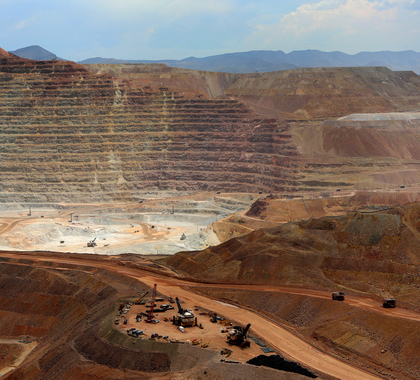The U.S. Army Corps of Engineers’ St. Paul District Office issued a final wetlands permit to PolyMet Mining, authorizing the company to discharge dredge and fill material into 901 acres, as part of the construction and operation of the NorthMet copper mine.
PolyMet needed the Army Corps’ permit because the land in question, formerly owned by LTV Steel Mining Co, is covered by the Clean Water Act of 1972, which requires government approval for projects potentially affecting wetlands.
Reduced Project Size
To satisfy some of the Army Corps’ concerns, PolyMet scaled back its proposed mine site by approximately 500 acres. The company also purchased 1,278 credits from the Lake Superior Wetland Bank to offset wetland losses.
The wetlands permit was the final approval PolyMet needed to build and operate the NorthMet mine, which is expected to produce copper, nickel, and possibly other precious metals. The permit also allows PolyMet to operate a processing plant near Hoyt Lakes, Minnesota.
In approving the mine plan, the Army Corps is protecting the environment while allowing much-needed access to valuable minerals, says Col. Sam Calkins, commander of the St. Paul District Office.
“This has been a very carefully weighed decision,” Calkins said in a press release. “We are confident that we have identified an appropriately balanced alternative and proffered a permit that will allow access to an important mineral resource while maximizing protection to natural resources, including wetlands.”
Widespread Benefits Expected
The mine will boost the region’s economy and create a large number of jobs, Richardson says.
“PolyMet expects to hire over 1,000 people, many from the local area, in the construction phase, which will total over two million hours of work over a 24- to 30-month period,” Richardson said. “When fully operational, the company will employ about 360 full-time workers, with studies indicating the project will create another 600 or so spinoff jobs.
“An older study done by the University of Minnesota-Duluth indicates the mine could add $515 million to the St. Louis County coffers, a figure that might be higher in today’s economy,” Richardson said. “It is a real big win-win that a mining company will be able to operate for 20 years drawing from a well-trained pool whose forebears have been mining in Minnesota for well over 100 years.”
While running for office in the summer of 2018, Gov. Tim Walz said copper is a valuable resource in building solar panels and thereby allowing the electricity sector to reduce its carbon dioxide emissions. Since becoming governor, Walz has refused requests that he try to impede the environmental review and permitting process for the NorthMet mine.
‘Want These Mining Jobs’
The Trump administration recognizes the value of mining to the nation’s economy and has made it easier to expand mining operations, says Isaac Orr, a policy fellow at the Center of the American Experiment (CAE).
“The Obama administration refused to renew two mineral leases along the South Kawishiwi River for the Twin Metals copper-nickel project near Ely, Minnesota,” Orr said. “President Trump’s Interior Secretary, Ryan Zinke, before he resigned, moved to reinstate the two canceled leases, although the matter is still being litigated in federal court.
“The people who live in the area want these mining jobs that pay up to $80,000 a year, with local polling CAE conducted and reported in the Summer 2018 Thinking Minnesota magazine, showing 61 percent of northeast Minnesota residents have a favorable view of mining operations, compared with just 43 percent in the urbanized Twin Cities area,” Orr said.
From ‘No’ to ‘Yes’
If more mining is allowed, Minnesota’s mineral wealth could bring even more benefits to the U.S. manufacturing sector, Orr says.
“Minnesota already produces 75 percent of the nation’s iron ore, and also has the largest copper deposits in the world, as well as economically recoverable quantities of platinum, gold, and other precious metals,” Orr said. “The Center of the American Experiment has estimated the mining industry in Minnesota has a net impact of 8,500 jobs, adding $3.7 billion to local economies.
“PolyMet’s permit approvals are just another example of how the U.S. economy is adding manufacturing jobs, with a change in regulatory policy from the previous presidential administration finding reasons to say ‘no,’ to the Trump administration finding ways to make saying ‘yes’ environmentally and economically acceptable,” Orr said. “That is very good news for the working class in the northern Minnesota mining district, and for the nation as a whole.”
‘A Big Win’
Glencore AG, a multinational commodity trading and mining company that has agreed to purchase the first five years’ worth of copper from the NorthMet mine, holds nearly $250 million of PolyMet’s debt.
With this final permit in hand, PolyMet should be able to raise the hundreds of millions of dollars necessary to finance construction of the mine and processing plant, says Bruce Richardson, vice president of corporate communications and external affairs at PolyMet.
“Obtaining the permit was a big win for us, allowing us to open a copper-nickel-precious metals mine within the world-class Duluth Complex,” Richardson said. “Startup hinges first on addressing a $243 million debt to Glencore AG.”
“Obtaining financing should be much easier now that we have all of our permits,” said Richardson.
Duggan Flanakin ([email protected]) writes from Austin, Texas.




